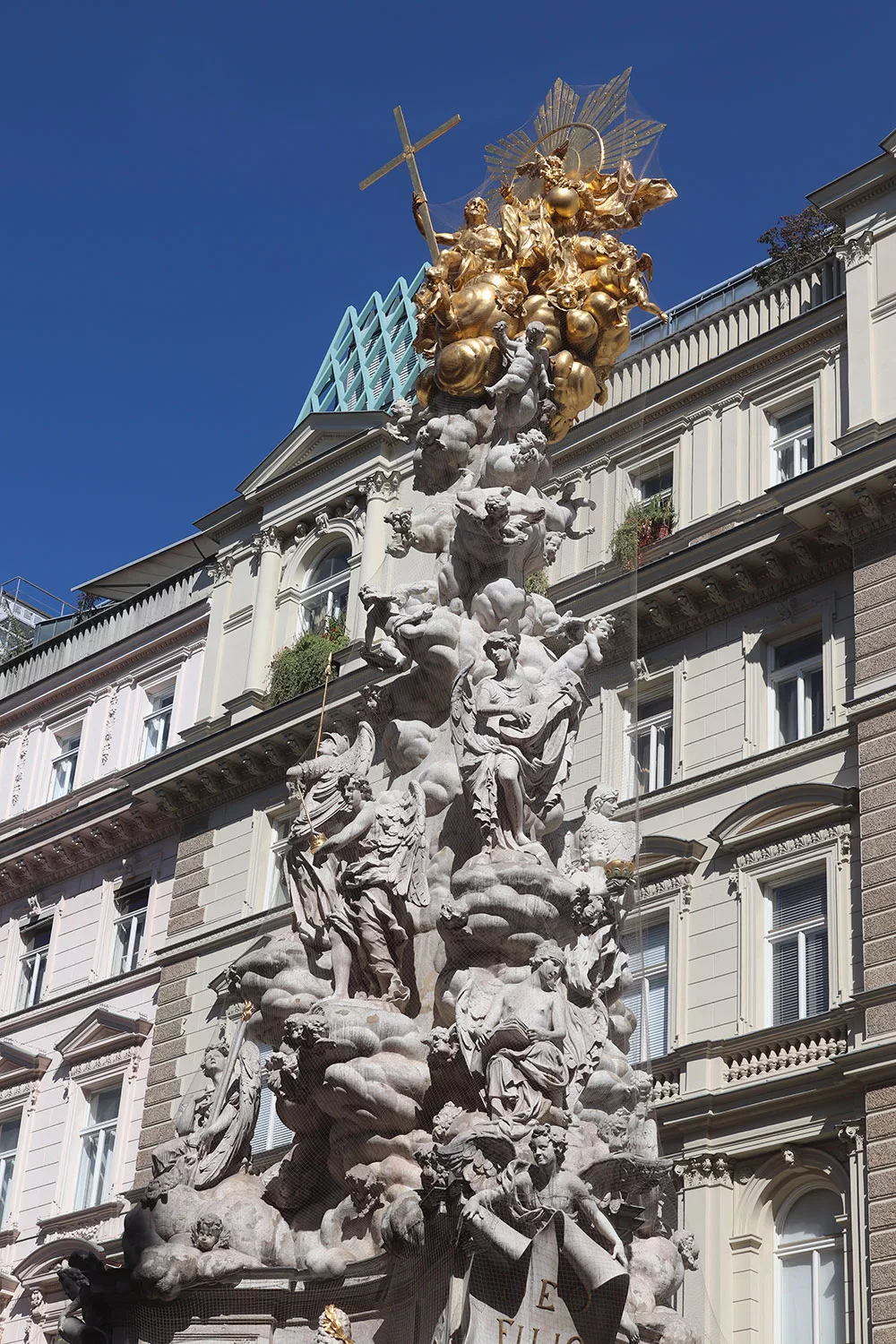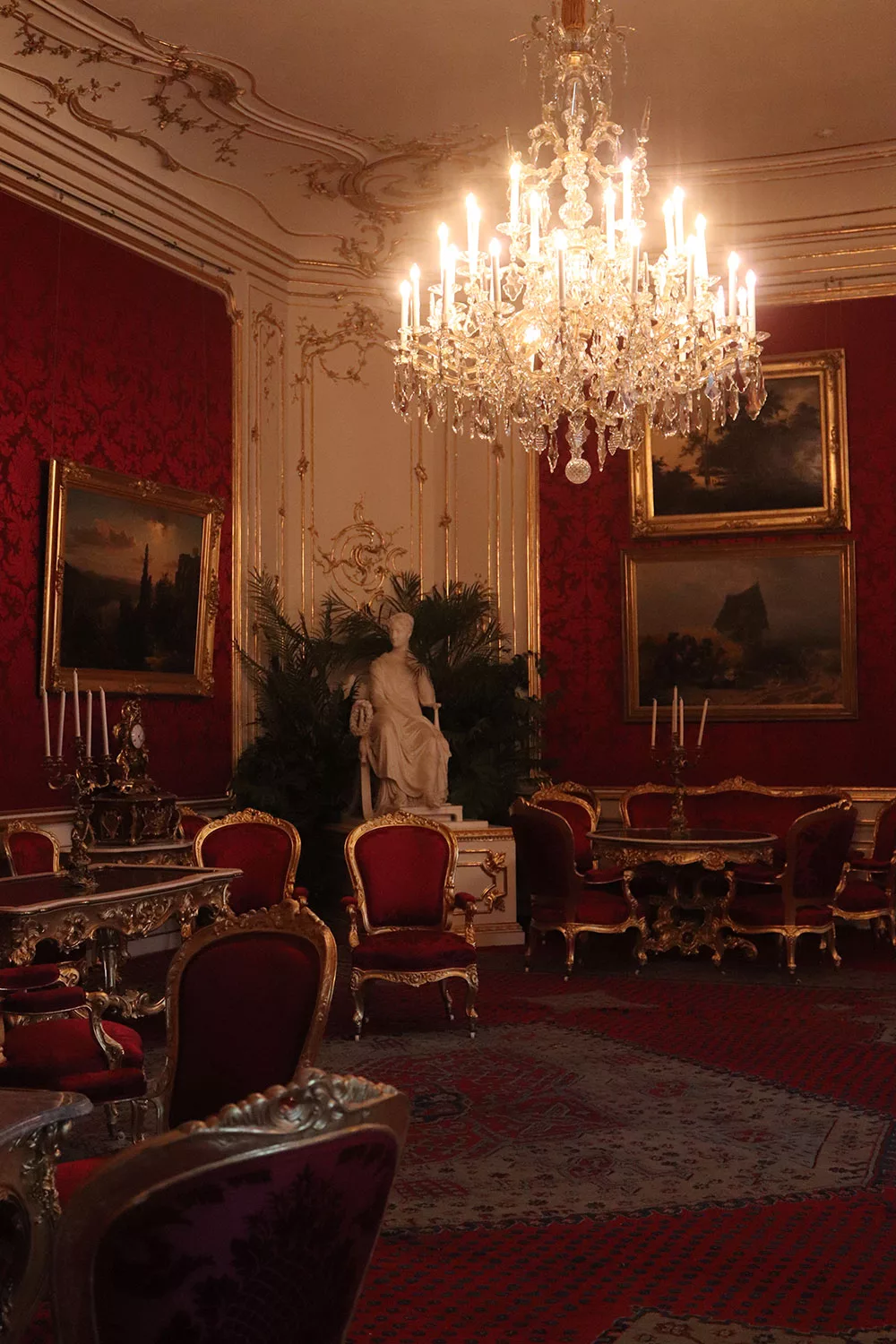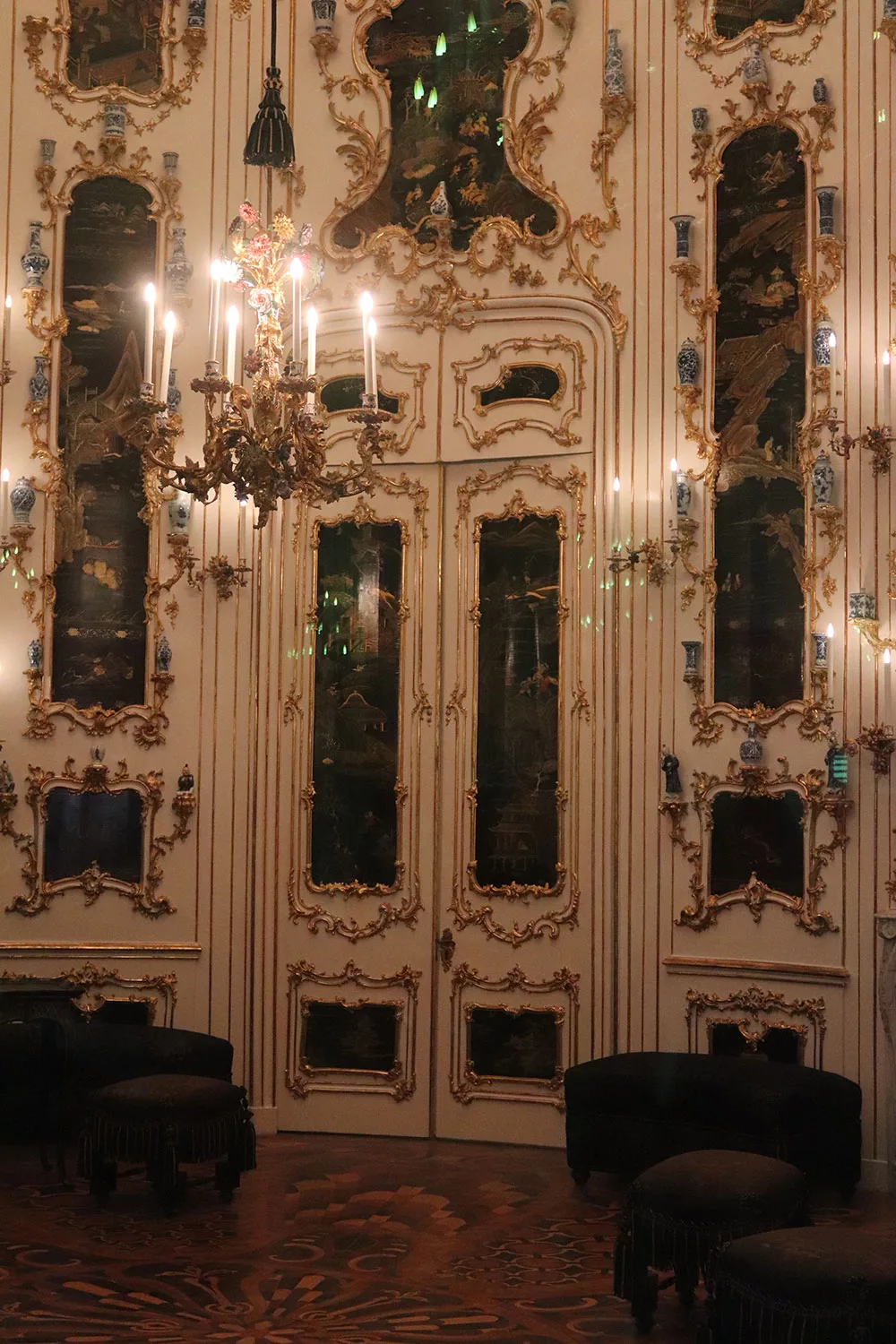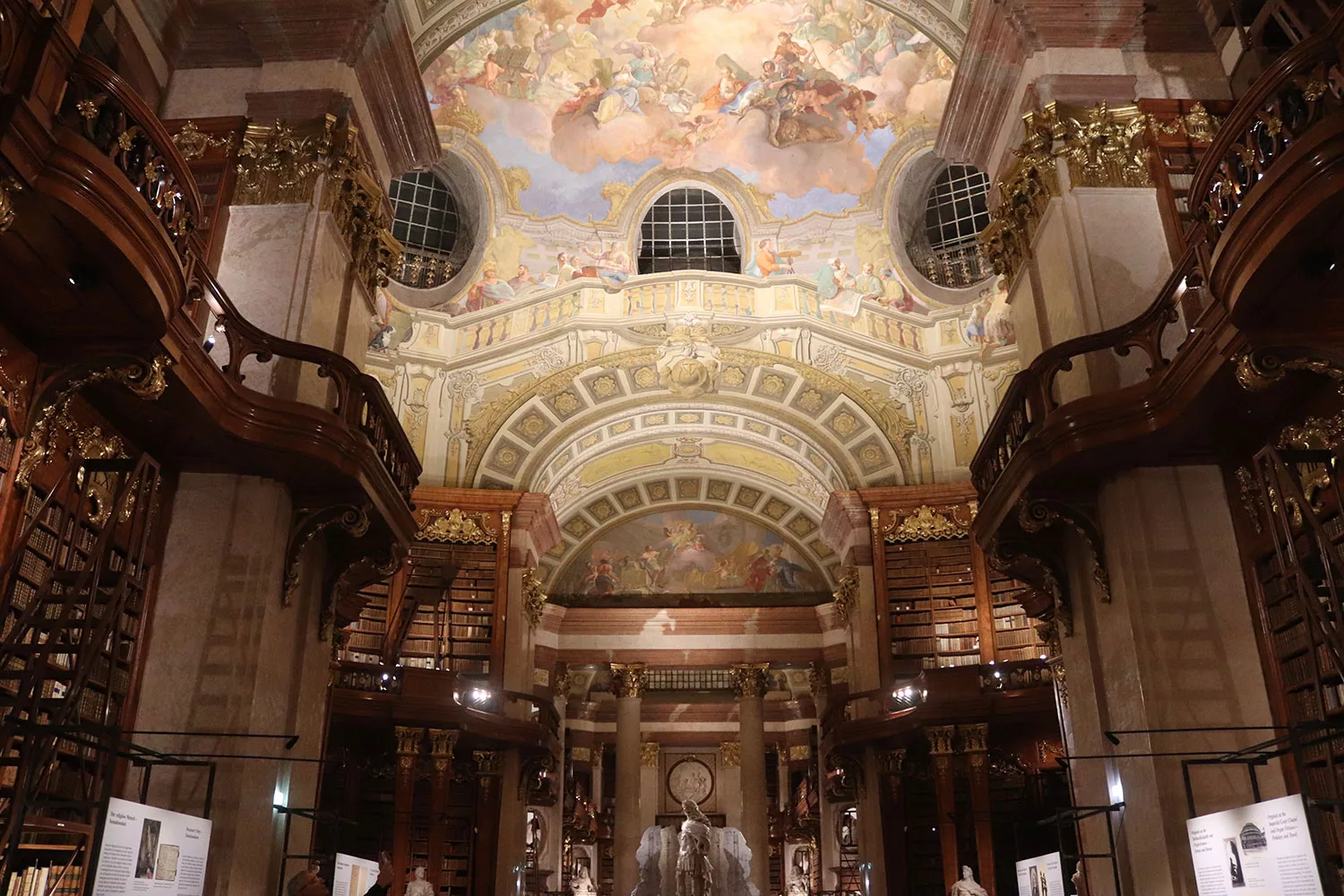Exploring the Imperial City of Vienna, Austria (Things to Do & Travel Guide)
Last updated on April 10, 2025
Vienna is known for its imperial architecture and world-class art museums, so it’s been on my list for a long time. After spending a few days museum hopping and exploring the what I could of the city, I really liked Vienna and can’t recommend a trip enough for art lovers.

A Brief History of Vienna
Ironically, Vienna started as a Roman settlement named Vindobona or “white base/white city.” When I think of Vienna today, I think of all the white Baroque buildings that give the city its personality.
The city grew with ties (and animosity) to surrounding Celtic and Germanic tribes and was declared an imperial city under the Holy Roman Empire in 1237. In 1440, Vienna became the seat of the Hapsburg dynasty and it never really turned back from being #1 after that. It would be the seat of the HRE for 3 different eras, or over the course of 300 years.
The economy strengthened and culture flourished, which is evident today since a lot of the Baroque architecture dates back to the 17th and 18th centuries. A lot of the buildings themselves were built by and for the Hapsburg family.
When the Austrian Empire was formed in 1804, Vienna became the capital, a position it continues to serve today. It was heavily destroyed during World War II but what I find most interesting about its postwar history is it was actually divided into four territories: the US, UK, France, and USSR. The city was “returned” back to Austria in 1955. If you learn history through movies, The Third Man (1949) is a popular film in which this division is a central theme.
Today the historic center is now a UNESCO World Heritage Site.
Art Museums in Vienna
What drew me most to Vienna was the number of world-renowned art museums. Of course the Kunsthistorisches Museum is amazing with a lot of masterpieces by artists like Brueghel and Caravaggio. However what I liked most was actually its ancient collections of decorative arts. It’s a very large museum and you can spend hours there.
The Upper Belvedere is another famous museum and it’s advised that you buy your ticket online. It houses a wide range of artwork in an 18th century Baroque palace which is gorgeous on its own. It’s here you can see Klimt’s famous painting, “The Kiss.” If you can only visit a handful of museums, I recommend these two.
Across the large gardens is the Lower Belvedere which is much less crowded, but the collection is much smaller. They have a collection of medieval art and host exhibitions. There’s also the Belvedere 21 which hosts a collection from the 20th and 21st centuries, but I didn’t visit because I’m not particularly into that kind of art.


Another popular art museum is the Albertina. I was a bit shocked by how small it is, with only a handful of collection rooms (modern art) and an exhibition space. I actually did a few circles before asking security where the rest of the museum was. Unfortunately some state rooms were closed for my visit, but I did get to visit a few and they had works by Albrecht Durer which was the real highlight for me. The Albertine also has a sister museum, the Albertina Modern.
There are lots of art museums I didn’t get to visit, including the Museum of Modern Art (MUMOK) and the Leopold Museum which hosts a collection of Klimt and his contemporaries. If you have time, you can go to the Klimt Villa and see where his studio was. They’re all on my list for next time.


I can’t even begin to list all the art museums Vienna has in this blog post, but some popular ones worth keeping on your radar are the Kunst Haus Wien, Heidi Horten Collection, Vienna Furniture Museum, and Museum of Applied Arts.
Some of Vienna’s Palaces


Vienna also has a few palaces to visit. In the main part of the city is the Hofburg Palace which can be confusing because the huge palace was divided up for different functions. The palace was built over time but is mainly in the Baroque style that seems to define the city. If you want to see the state apartments, you’ll visit the Sisi Museum which also has an exhibition on Empress Elisabeth of Austria. She was a free and mentally tormented soul who was forced to live the life of an empress, and her story’s interesting to read about. The exhibition is absolutely excellent.
In this area you can also explore Michael’s Place (Michaelerplatz), Column of Pest, and St Peter’s Catholic Church. Walking around the palace complex feels like a museum unto itself.



If you venture outside the city center a bit you can visit Schonbrunn Palace which is one of Vienna’s top attractions. It is a Baroque palace that was once a summer home of the Hapsburgs. There are a few different tours to take but I did the grand tour since it covered the most ground. As you can expect, the rooms inside are very extravagant but the grounds are the most notable because they are humungous and seem to be never-ending.
Both cost a lot of money and are nice, but only if you like fancy rooms. I do and I still felt like the visits were overpriced. I think if it’s something you’re not really into then it wouldn’t be worth the cost to go into the palaces. If you have to choose one, I actually liked the Hofburg Palace more.
If you’d like to connect more with Hapsburg then you can also put the Imperial Treasury and Imperial Crypt on your list.
I also wanted to visit the Hermesvilla but it was a bit too outside the city.
Other Things to Do in Vienna





No trip to Vienna is complete without seeing St Stephen’s Cathedral, which is called the “symbol of Vienna.” It was built over the course of the 12th-16th centuries and it is beautiful both inside and out, a reminder of Vienna’s medieval days. And it’s also free to visit!



The Austrian National Library is another place iconic of Vienna. It does cost a few euros to get in but you can also walk through the Baroque library and explore, which you can’t in some other places (looking at you, Prague). They also have some information and display boxes where you can learn about the library and some of its collections.
I also highly recommend the Wien Museum for history lovers. This museum has numerous floors of Viennese history, ranging from the cultural to the political, the medieval era to the protests against COVID protocols. It’s a really excellent place to learn about the city and what’s made it tick for the past few hundred years.
For more history, you can visit the House of Austrian History which focuses only on Austria after World War I. It’s small but packed with information about how Austria became part of the Third Reich, what life was like during the middle of the century, and what popular culture is now. It’s small but I thought it was worth the visit.


By the time I got to Vienna from Salzburg, I was a little classical music-ed out. I did go ahead and visit Mozarthaus which is the actual apartment where Mozart lived for two years. It was an incredibly informative museum, and housed in an actual Mozart residence, very much worth the trip. Vienna also hosts museums on composers like Joseph Haydn, Johann Strauss and Ludwig van Beethoven.
One thing I decided to do in Vienna was visit the Opera. I’m not into opera but decided to give it a different try by seeing Carmen, the opera for people who don’t like opera. It was advertised as having English subtitles but they were just in German. There seemed to be a lot of tourists, like me, but also a lot of local families – so it’s a way to immerse yourself in the culture, more-so than going to a classical concert specifically designed for tourists. You can view the schedule for the Vienna operas here.


Something else a lot of people say you should try in Vienna is the Sachertorte, which is a chocolate cake with apricot preserves. People flock to Cafe Sacher to get this cake but it’s actually sold at a lot of different cafes in Vienna where you don’t have to wait in a huge line and pay a ridiculous price for a slice of cake. I went to Paolo Bortolotti, which has a few different locations, but there several other cafes that offer the Sachertorte as well.


One place I got to visit was the Butterfly House. Since I had a limited budget it was honestly not the smartest use of my money, but I did get to see some beautiful butterflies.
If you have a free day or evening you can also visit the city’s amusement park, Prater.
Now that I’m writing all this down, it feels like it’s not a lot. Of course there are many, many more things to do and see in Vienna but even the few places that I did see took up a lot of time. It was a busy few days. Vienna has an excellent public transport system to take advantage of, but even so, it’s a big and spread-out place so time planning is something to keep in mind.
Saving Money in Vienna
I went with the Vienna City Card for 7 days, which was almost worth it. It grants you free use of their public transport system and small discounts on attractions. I “saved” the money I would’ve used on public transit plus about 13 euros, but it ended up amounting to the cost of the card itself. And I visited a lot of museums.
The best deal is to get a public transport pass which is currently less than 20 euros for 7 days. Very good deal, and you don’t have to worry about getting tickets whenever you get on the bus or the metro.
You can also consider the Vienna Pass but it’s quite expensive. It might be a good option if you’re looking to do a hop on-hop off bus and lots of museums but be sure to calculate how much you’re going to spend on museums before purchasing – you might actually be losing money with the pass.



I really liked Vienna and even though I saw a lot, there’s still so much to see. The art was the main draw and it did not disappoint – the city’s a must-visit for people who like European art. I spent about 4 days and it wasn’t nearly enough to see everything I wanted, but I’d spend so much money on museums by the time I left that I accepted defeat. I highly recommend spending several days there to see as much as possible and get to know the city and its people.
Have you ever been to Vienna? What did you like best?
Book an Organised Tour
Book Your Stay
Need a Book on Vienna?
I’m happy to partner with Bookshop.org to promote sales from independent booksellers.
About the Author
My name's Lilly and I'm a Baltimore-based travel blogger with a focus on art and history. I work full time and manage to get in several trips a year. Learn more about me.Tags: austria, europe, vienna













